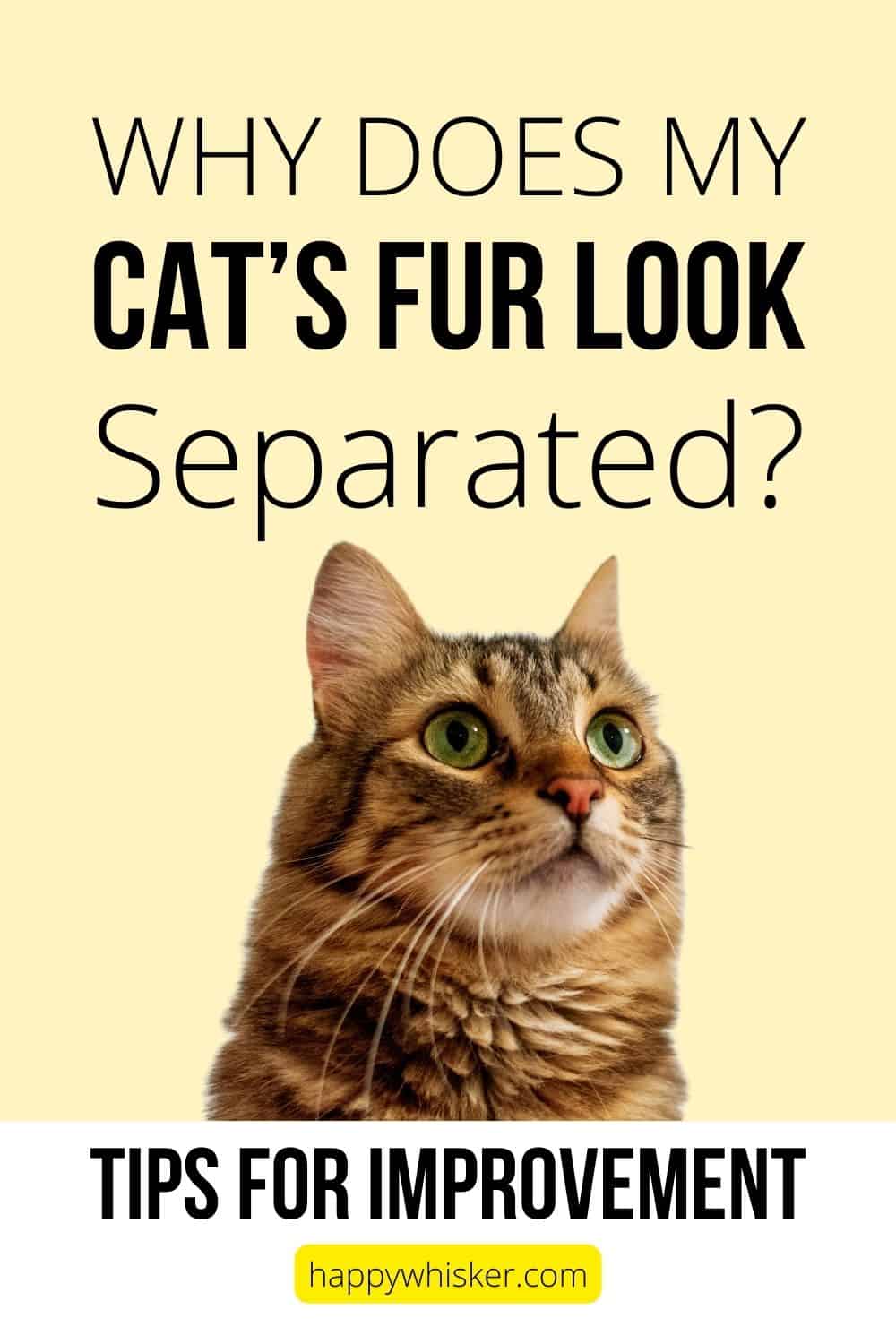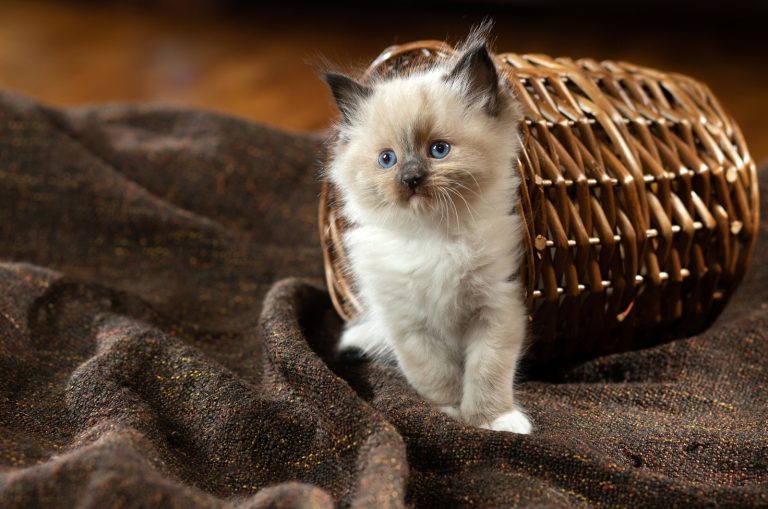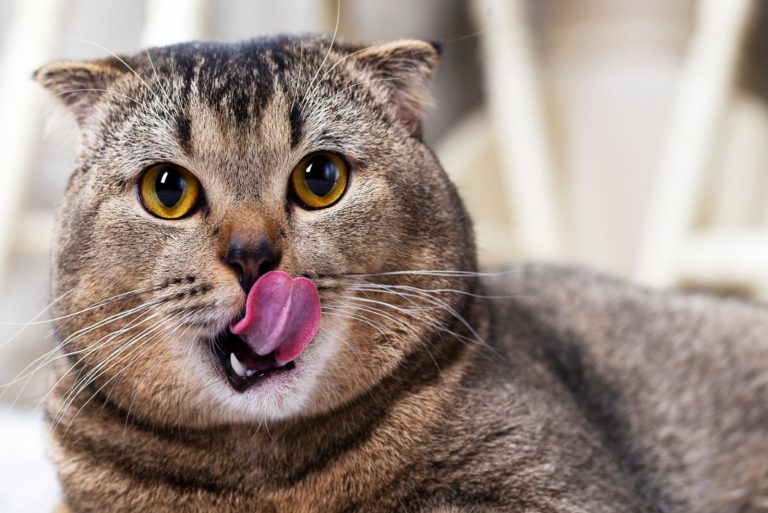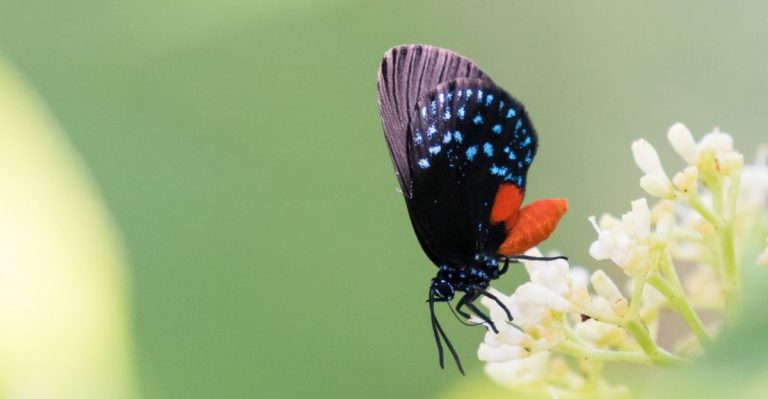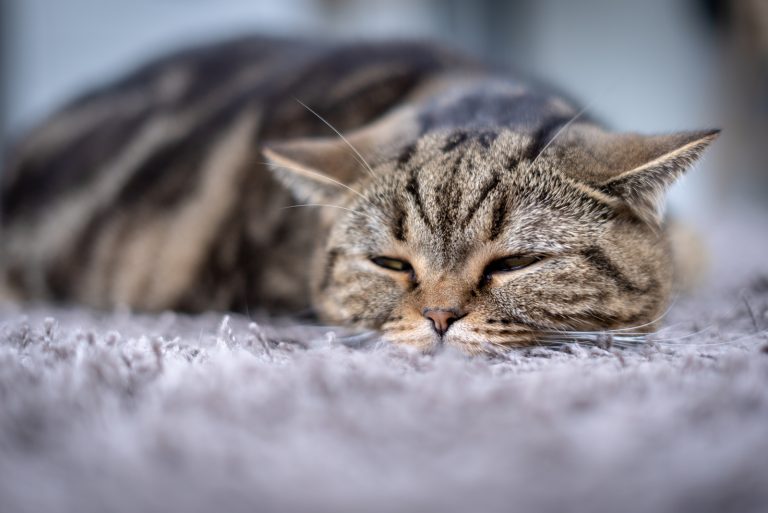Why Does My Cat’s Fur Look Separated? Tips For Improvement
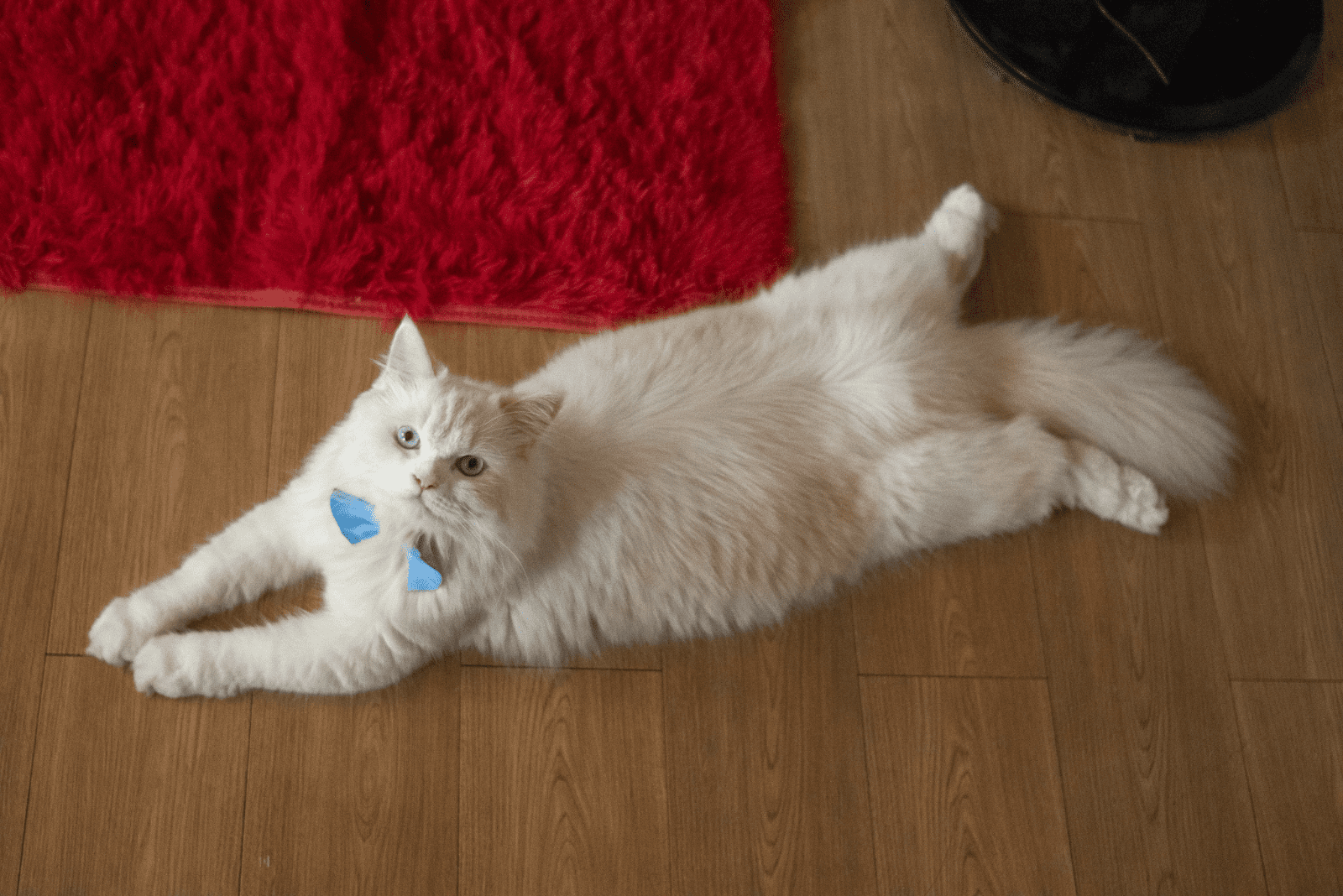
Every cat owner will most likely experience this with their cat and will ask the common question: Why does my cat’s fur look separated?
There are various reasons why a cat’s fur looks separated. The causes are most likely obesity, skin irritations, or your cat’s old age. Luckily, every problem has a solution. The same applies here.
If you’re wondering why is my cat’s fur kind of dirty and separated, continue reading to learn all about the different causes, symptoms, and how to help your feline friend.
Reasons Why My Cats Fur Looks Separated
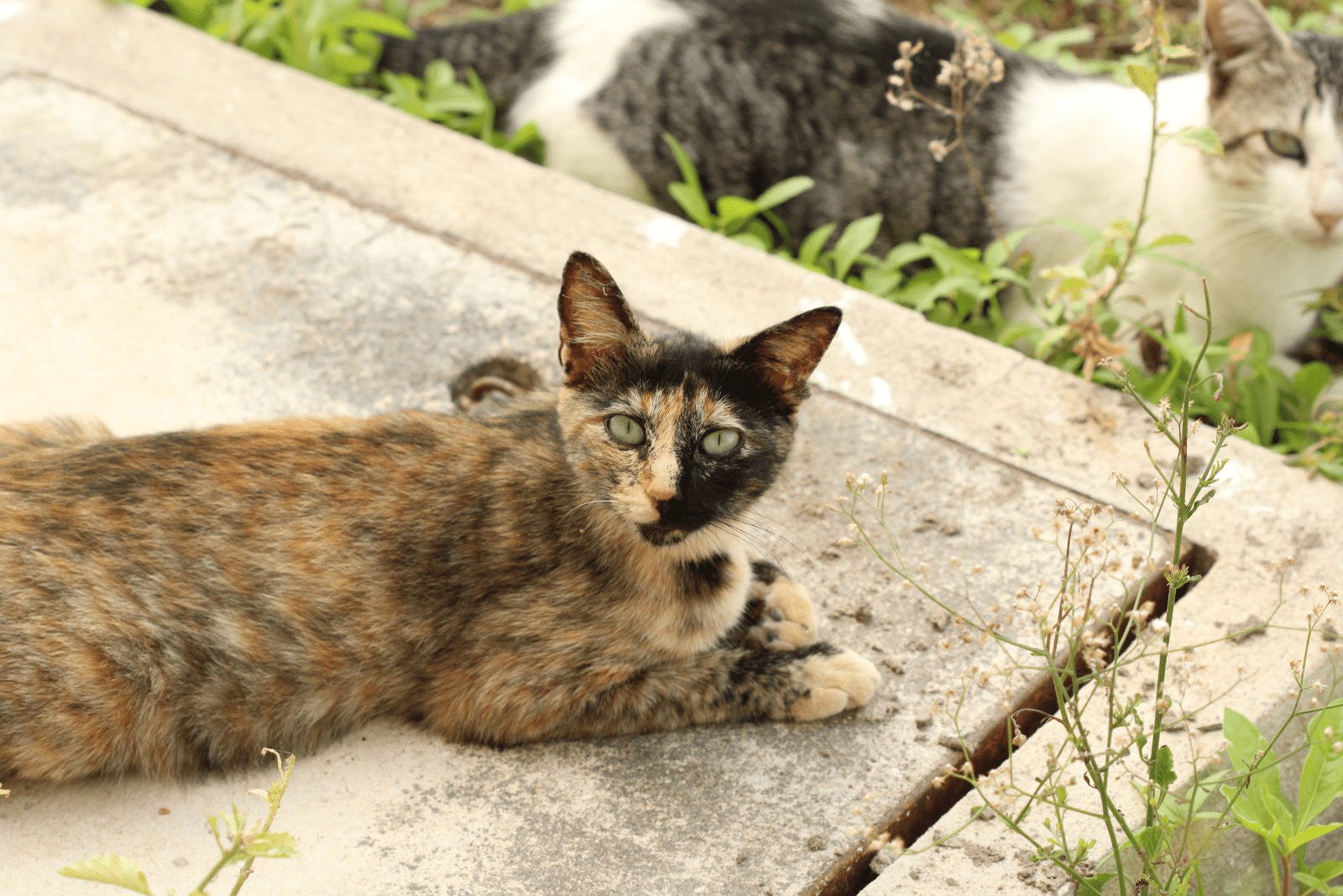
There are several possible reasons for your cat’s separated fur. Sometimes it’s as simple as the cat requiring hand brushing, its fur clumping on its own, or it is shedding season. Certain meds might also cause hair separation in your cat.
When a cat’s fur sticks together to form a dull look, it is said to have a divided coat of fur. Separated fur can make your cat look less appealing and may make them sad due to discomfort. A separated coat, with clumping fur, is also called a staring coat.
Staring Coat
A staring coat occurs when the ends of a cat’s hair begin to stick together, most often owing to oil accumulation. The fur no longer lies smooth but is divided into rows or small clumps.
As a result of this, your cat’s coat looks like it’s clumpy, with separated fur. If your cat has stopped grooming properly, it will most likely develop a staring coat.
All cat owners are aware that their cat(s) spend a lot of time licking themselves. However, most aren’t aware of the importance of this behavior.
Why Does It Happen?
It’s also crucial to know where the fur is splitting on their body. If it’s on a leg or tail, it might be a typical depression caused by bone flexing. However, it might be something more severe, such as a skin problem or neurological issue.
The culprits might include seborrhea, malignancy, obesity, or arthritis. When a cat is unable to clean itself frequently enough, under-grooming causes problems with its skin and fur. Dandruff, clumping, and matting can ensue.
Pay close attention to your cat’s behavior and the natural condition of his coat. If you’re certain it’s not a grooming issue, watch for anxious licking, skin irritation, or damage.
A staring coat isn’t much of an issue on its own. However, it often signifies a bigger health issue. Here are the reasons why staring coats occur.
Stress
Stress and anxiety are the most common reasons why a cat’s fur looks separated. There are different reasons why cats get stressed, which might result in tangles and separated fur.
When a cat is anxious or stressed, it is unable to lick and groom itself because grooming is a sign of weakness. Cats get fearful and anxious for different reasons, even if those reasons seem irrelevant to us.
Some of the most common causes of stress in felines include new pets, other cats, new people, or a change in their surroundings. Even if you happen to bring a new piece of furniture into the house, your cat might get stressed.
Health Issues
Cats frequently get separated fur due to health problems. Illnesses or conditions like hormonal imbalances and infections in the cat’s mouth, stomach, or skin can all be harmful to their health.
These can result in poor fur quality by causing nutritional deficiencies. Also, oral infections or dental problems might create clumping hair since the discomfort prevents your cat from grooming itself.
Weather Impact
Changes in weather and climate can also cause your cat’s fur to split. Certain temperature changes might produce drastic changes in your cat’s hair.
Cold temperatures and high humidity, for example, might cause your cat’s fur to separate and lose its shine.
Inability To Groom Itself
If a cat is unable to reach certain parts of the body, it won’t be able to clean itself, which will result in clumpy hair. The inability to groom properly can be caused by a variety of factors, including dental problems, skin diseases, or obesity.
If you notice that your cat is unable to groom itself, consider brushing and bathing them or seeing the vet right away. If there’s nothing severe going on, you can take your cat to a professional groomer.
You can assist in preventing this issue by providing the correct quantity and quality of cat food, so you avoid your cat becoming overweight.
How Is A Cat’s Coat Supposed To Look?
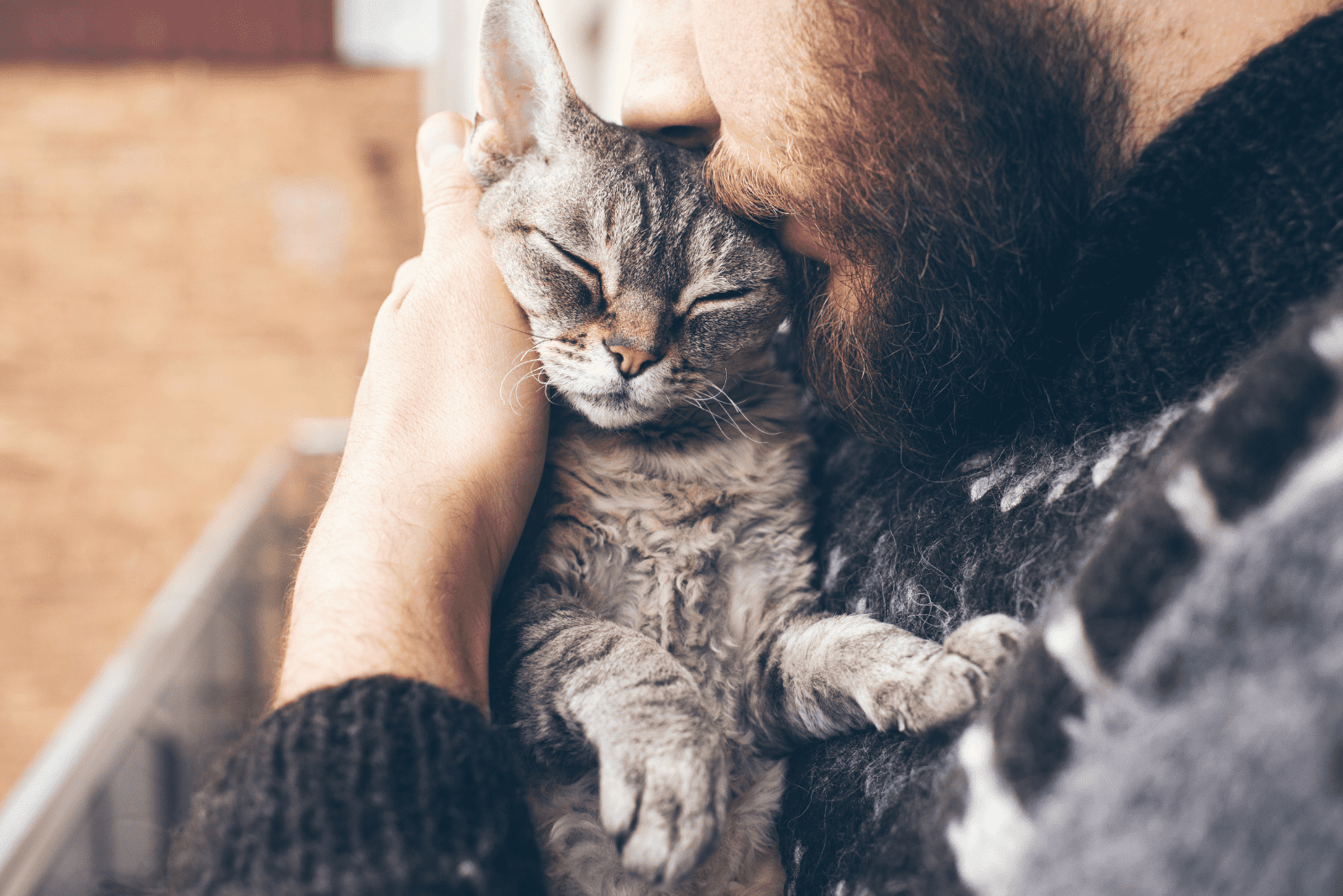
Healthy cat fur is shiny, silky, and soft to the touch. It shouldn’t clump together for any reason. Fur consistency varies amongst cat breeds. A domestic shorthair, for example, has a short, soft but protective coat, and a short undercoat.
Long hair cats may be more prone to matting than short hair cats, making clumping more common, even when they are healthy.
Long-haired cats’ coats in good health should be silky and smooth. Their fur is obviously physically thicker than that of domestic short-haired cats.
What About Cat’s Skin?
Their skin should be silky yet not flaky. If you see flaky skin, it might be a symptom of skin problems like dandruff or a sign that it is drying out. In addition, their skin should be smooth and free of pimples.
Care And Prevention Of Separated Fur
Fur separation is usually resolved with a good brushing or a bath. A daily inspection of the coat will identify any concerning changes that may occur in their fur and skin.
Preventative measures are critical for maintaining your cat’s health; otherwise, your cat might suffer from constant hair separation. Humidifiers and baths all help keep your cat’s fur from separating.
It requires deliberate effort to keep your cat’s fur from separating. Make your cat feel secure enough to bathe in a clean, anxiety-free environment. Some of the most effective strategies to stop your cat’s fur from clumping are as follows:
• Use humidifiers since lack of humidity can make your cat’s fur separate.
• Bathe your cat when required.
• Check and regularly examine their fur.
• Use olive and coconut oils for fur care.
• Consult your vet about a diet change.
• Minimize stress.
1. Brush & Bathe
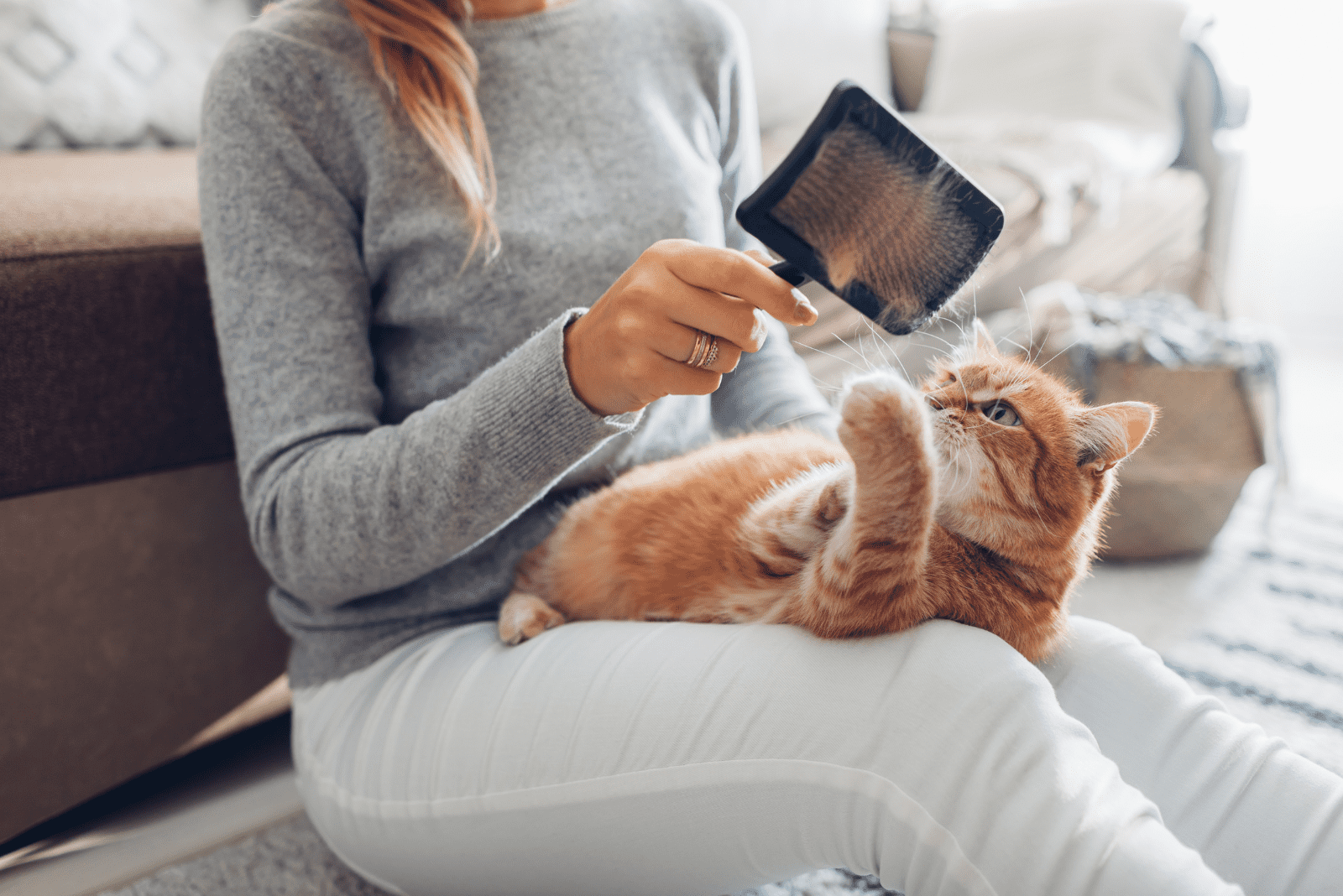
Brushing once a day will solve most problems. Brushing gets rid of dead skin, dander, and loose hair, as well as parasites, debris, and filth. It gets the natural oils from the coat into the hair follicles.
Cats do not require frequent bathing, and it is not recommended due to the drying properties of soap and water. Adult cats are excellent cleaners, so bathing should be limited to once or twice a year at most.
However, the frequency of washing will be determined by the cat’s lifestyle, underlying health conditions, and age. For example, overweight and older cats will require a bath more frequently than younger cats.
Bathing your cat is vital if they are unable to bathe themselves due to age, obesity, or dental concerns that prohibit them from cleaning themselves.
To learn more about bathing your furry friend, check out this article: How Often Should You Wash Your Indoor Cat?
2. Daily Check
You should examine the coat on a regular basis, regardless of how long the cat’s fur is. This will avoid clumps and tangles, which is especially important for long-haired cats.
Examining the coat will also aid in the detection of strange bumps, lumps, and sensitivities.
Always check and monitor your cat’s fur on a daily basis to ensure there are no dramatic changes. If you observe a change in look, you should take it to the veterinary clinic for an inspection.
3. Humidifiers
Humidifiers will protect your cat’s fur from becoming too wet and sticking together. A humidifier is necessary for some circumstances since a change in weather is a common cause of cat hair sticking together.
As a result, a humidifier can protect your cat from the effects of shifting weather in areas with climate irregularities. It also helps with cats that always suffer from separated coats during specific times of the year.
4. Oils
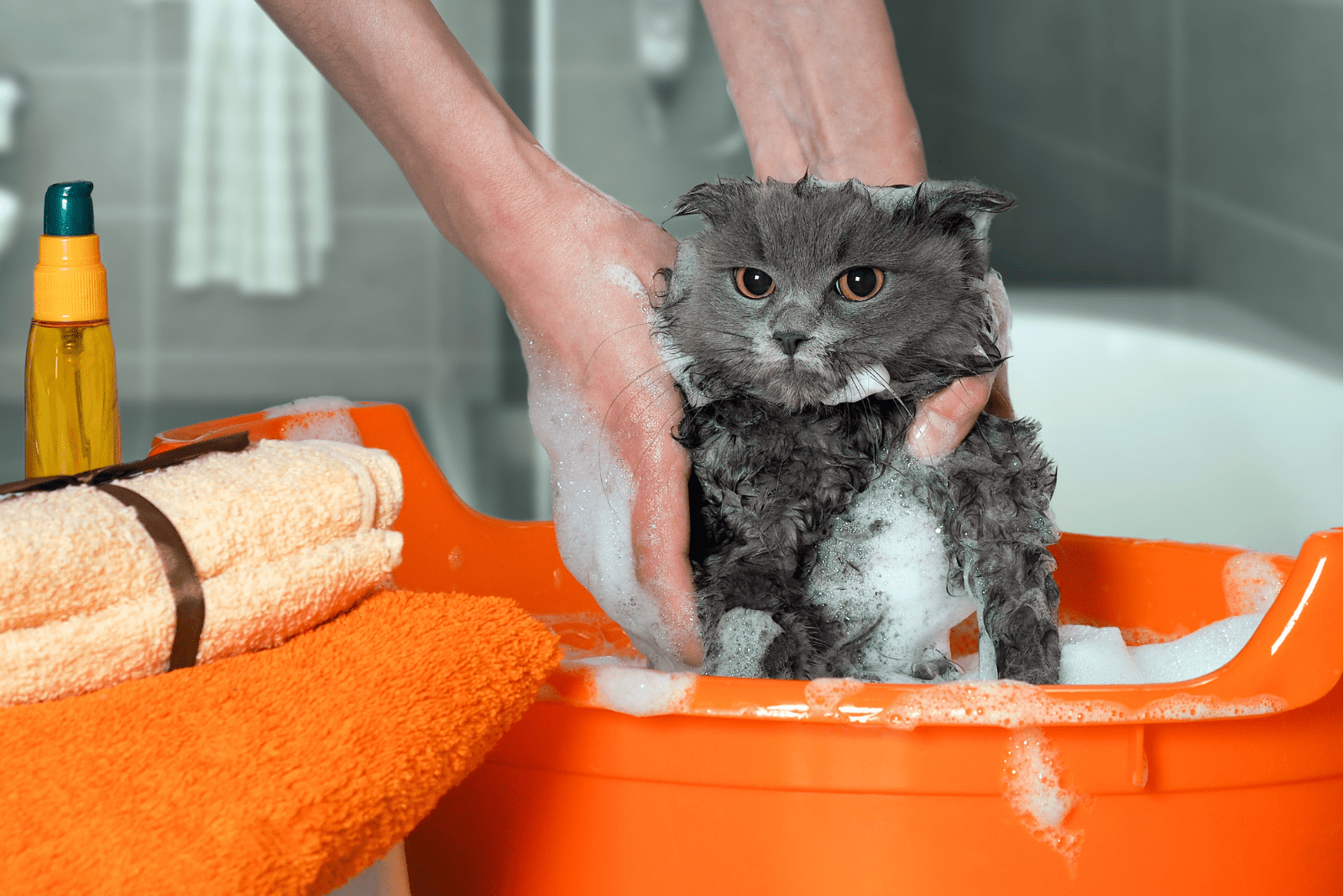
Fur separation can occur when a cat’s skin lacks sufficient natural oils. After shampooing your cat, rub a coin-sized quantity of coconut or olive oil over the dry section of their skin to enhance hydration.
If your cat cleans itself, you can rub the oil into the cat’s skin after they have been groomed. If you massage the oil into injured skin, it might be harmful to your cat.
The most essential strategy to keep your cat’s fur from separating is to offer them a nutritious diet. Feeding your cat foods rich in nutrients, carbohydrates, and proteins, will help them stay healthy.
5. Nutritious Diets
If you require a special type of food, see your veterinarian. Your veterinarian can recommend nutritious cat food to keep your cat’s fur from clumping.
6. Vet Check-Ups
If you have attempted preventative measures, but their fur continues to separate, consult your veterinarian. It is especially vital to take your cat to the vet if they exhibit signs of disease in addition to split fur.
Veterinarians can determine if your cat’s separated fur is minor or if there is a more serious underlying condition.
If there is a serious problem, your veterinarian will prescribe the necessary drugs or nutritional supplements to restore your cat’s health.
7. Minimizing Anxiety
Reduce your cat’s stress to keep them relaxed and happy in their environment. When your cat is relaxed, it is more likely to groom itself. Change may be a major source of anxiety in cats.
Reduce the change if you are constantly moving furnishings or introducing new individuals into your home. Reduce activity in your house or give your cat a secure place to groom so that their hair remains healthy.
How Often To Brush Your Feline

If you want to avoid your cat’s fur getting separated and looking all greasy and dirty, you should groom them regularly. Short-haired cats only need to be brushed once a week.
Cats that have medium to long coats, as well as those with silky or wavy coat types, require daily brushing.
Some cats might even need to be brushed twice a day (usually long-haired breeds). Brushing your cats regularly will help keep their fur from separating and also control the buildup of loose hairs and dandruff.
Suggested: 10 Best Brushes For Long Hair Cats + Buying Guide
Lack Of Grooming And Overgrooming
As I already mentioned, if you observe that your cat’s not cleaning itself as it should or that it’s not grooming as much, that is probably an indication of some health issue.
Most likely, it will be dental issues, arthritis, some kind of an injury, or your cat is simply getting older or overweight. All of this results in your cat’s fur becoming lumpy. The other thing that could happen is your cat getting ‘overgroomed’.
Overgrooming
Overgrooming occurs when your cat excessively grooms itself, which results in injury. You will notice this since there’ll be some form of skin irritation, spots without hair, or other visible indications.
This usually happens because of some sort of skin inflammation or parasites. Your cat is overcompensating by repeatedly nibbling and licking the infected area.
The best thing to do in this case is to visit your vet to determine the specific cause of your cat’s problem. This will assist in determining the diagnosis and treatment options specifically for your cat’s situation.
Final Thoughts
In conclusion, there are various reasons your cat’s fur looks separated, and all can be treated and dealt with successfully. I hope that I’ve rid you of all your concerns and that you’ll successfully treat your feline friend.
Once again, seborrhea, cancer, obesity, and arthritis are all possible causes. Undergrooming occurs when a cat is unable to clean itself regularly enough, causing skin and hair issues. Dandruff, clumping, and matting can occur as a result.
All of which contribute to why my cat’s fur looks separated. Always remember to discuss everything with your vet, especially if something is happening for the first time. Your vet is there to help and will know exactly what’s the issue for your cat.
Related Articles:
• Cats With Undercoats – Grooming And Care Tips
• Best Cat Shampoo Alternatives: No More Bathing Nightmares
Like this post? Share or pin it for later!
